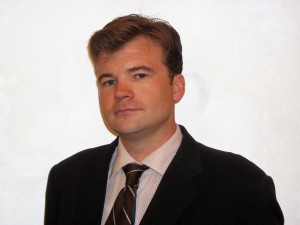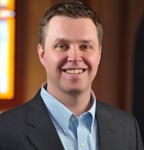 News about Catholic schools in the U.S. usually isn't good. Rarely a week goes by without a headline about another one closing and, with it, a neighborhood institution that for generations brought high-quality education to often low-income families. So what a nice change to see another local story about a Catholic school in Tampa, for years on the brink of closing, making a comeback.
News about Catholic schools in the U.S. usually isn't good. Rarely a week goes by without a headline about another one closing and, with it, a neighborhood institution that for generations brought high-quality education to often low-income families. So what a nice change to see another local story about a Catholic school in Tampa, for years on the brink of closing, making a comeback.
Thanks to hard work and grit and a growth in tax-credit scholarships. St. Peter Claver recruited 163 students this year, up from 102 las year, according to today's Bay News 9 (which also took this photo). Ninety percent received tax credit scholarships, which are only available to families who qualify for free- or reduced-price lunch.
Increasingly, St. Peter Claver isn't an anomaly. The Wall Street Journal reported in June that, "Fo the first time in decades, Catholic education is showing signs of life." It continued: "Driven by expanding voucher programs, outreach to Hispanic Catholics and donations by business leaders, Catholic schools in several major cities are swinging back from closures and declining enrollment."
On a related note, another Tampa Bay area Catholic school, Sacred Heart in Pinellas Park, is holding a celebration this weekend to highlight its new partnership with the Notre Dame ACE Academies. As we've written before, the Notre Dame group is moving to take Catholic schools to a higher level, and it is using a couple of Tampa Bay schools as a model. Tax credit scholarships are key to its efforts to boost enrollment, particularly among Hispanics.
On an education landscape with more private options, these are signs of healthy ferment.
 Charter schools took a page from Catholic schools when they arrived in the 1990s and began their expansion – character development, solid discipline, a no-excuses approach to success for low-income kids. But now it's Catholic schools, struggling with declining enrollment (in part because of competition from charters), that should borrow good ideas from charters, the author of a new report says.
Charter schools took a page from Catholic schools when they arrived in the 1990s and began their expansion – character development, solid discipline, a no-excuses approach to success for low-income kids. But now it's Catholic schools, struggling with declining enrollment (in part because of competition from charters), that should borrow good ideas from charters, the author of a new report says.
Sean Kennedy, a visiting fellow at the Lexington Institute, points to how high-performing charter schools have embraced data and technology to better differentiate teaching, including use of “blended learning” models that have both improved student performance and reduced cost. “They’ve really invested in data,” Kennedy, a product of Catholic schools, said in the redefinED podcast below. “And that’s something that, unfortunately, for various cultural and just simply resource reasons, Catholic schools have shied away from.”
Kennedy says despite the funk they’re in, Catholic schools can more nimbly embrace promising trends than other education sectors and again stand out. They don’t have the bureaucratic or union entanglements of traditional public schools, and they still have the faith and character-building components in their favor.
“I’m very optimistic,” Kennedy said. Catholic school educators “often take huge pay cuts from what they would get in public schools. They often work much longer hours. And they love what they do. So if it can be presented to them in a way that this is going to benefit both their teaching and their students directly, I think teachers and administrators in Catholic education are at a special advantage to grab a hold of this data movement and really run with it.”
Kennedy also said vouchers and tax credit scholarships can be crucial in Catholic school reform efforts, particularly with Hispanic students. A project is now underway in the Tampa Bay area with two Catholic schools that accept tax credit scholarships and the Notre Dame ACE Academies, which aims to revitalize Catholic education. “There’s fewer and fewer kids in inner city areas being served by high quality Catholic schools, as these Catholic school business models kind of collapse in on themselves. And that’s a tragedy,” Kennedy said. “With the growing Hispanic population, there’s even greater need to serve these families.”
 A chain of Catholic, college-prep high schools that has demonstrated success with low-income students is eyeing two Florida cities for a possible expansion. Tampa and Miami are near the top of the list for the Chicago-based Cristo Rey Network, group president Rob Birdsell told redefinED. The reasons: A good job pool. The availability of tax credit scholarships. A need for more high-quality options for low-income kids. And maybe even some nudging from former Florida Gov. Jeb Bush.
A chain of Catholic, college-prep high schools that has demonstrated success with low-income students is eyeing two Florida cities for a possible expansion. Tampa and Miami are near the top of the list for the Chicago-based Cristo Rey Network, group president Rob Birdsell told redefinED. The reasons: A good job pool. The availability of tax credit scholarships. A need for more high-quality options for low-income kids. And maybe even some nudging from former Florida Gov. Jeb Bush.
“We very much want to get to Florida,” Birdsell said in a phone interview. “Gov. Bush is a friend of Cristo Rey (and) he is persistent.”
Lauded by education reformers and others for innovative work with Hispanic and African American students (see if you can get through this “60 Minutes” piece without crying), Cristo Rey now operates 24 Catholic high schools in 17 states and the District of Columbia. Its students typically come in two grade levels behind. But 84 percent of those who graduate enroll in college.
The students pay more than half of the $12,000 average tuition through a corporate work study program that gives them real-world experience at banks, hospitals, law firms and other partners. Accessing Florida’s tax credit scholarship program – worth $4,335 per student this fall – would fill out most of the remaining gap. That would take pressure off both the families and the network’s fundraisers. (more…)
Catholic schools used to be neighborhood schools. Many of them served immigrant familes. But since 2000 alone, more than 1,700 have closed in the United States, leaving voids in communities and diminishing school choice options for families who could use them now more than ever. In an effort to change that, the University of Notre Dame is leading a partnership that aims to improve the quality of Catholic schools, particularly for low-income, Hispanic families.
 The university's ACE Academies program began two years ago in Tucson, Arizona and is now rolling out at two schools in Tampa Bay (St. Joseph in Tampa and Sacred Heart in Pinellas Park). In this redefinED podcast, program director Christian Dallavis notes two important statistics: 1) two thirds of practicing Catholics in the U.S. who are under the age of 35 are Hispanic, and 2) only about 50 percent of Hispanic students graduate from high school in four years.
The university's ACE Academies program began two years ago in Tucson, Arizona and is now rolling out at two schools in Tampa Bay (St. Joseph in Tampa and Sacred Heart in Pinellas Park). In this redefinED podcast, program director Christian Dallavis notes two important statistics: 1) two thirds of practicing Catholics in the U.S. who are under the age of 35 are Hispanic, and 2) only about 50 percent of Hispanic students graduate from high school in four years.
"We see the future of the church is on pace to be kind of radically undereducated," Dallavis said. But "we also have a solution in that we know Catholic schools often put kids on a path to college in ways that they don't have other opportunities to do so."
It's no coincidence the program came to Arizona and Florida. Both states have large Hispanic populations. Both offer tax credit scholarships to low income students.
"They provide a mechanism that allows Catholic schools and other faith-based schools to sustain their legacy of providing extraordinary educational opportunities to low-income families, immgrant communities, minority children, the people on the margins," Dallavis said. "We see the tax credit as really providing the opportunity to allow the schools to thrive going into the future."
But make no mistake. This effort isn't about quantity. The Notre Dame folks know in this day and age, school quality, whether public or private, is essential - and they're looking to beef up everything from curriculum to leadership to professional development. Their goal for the kids: College and Heaven. Enjoy the podcast.